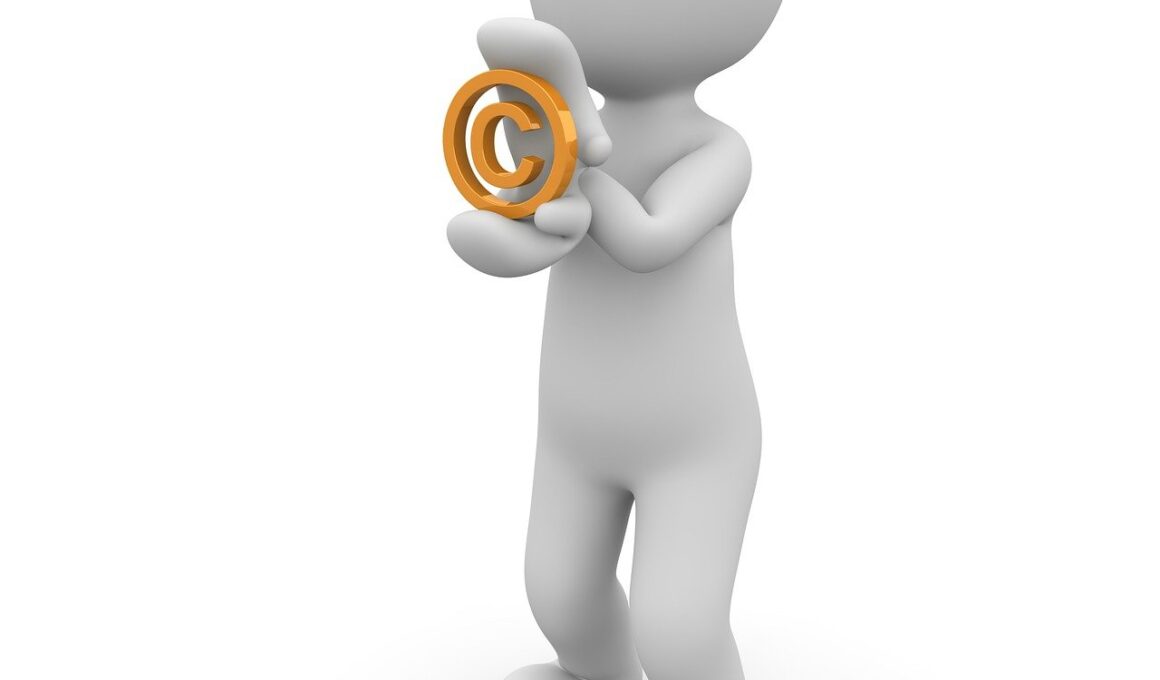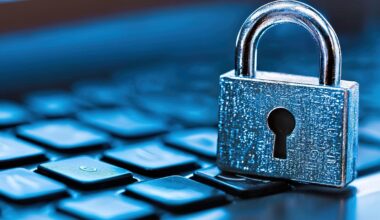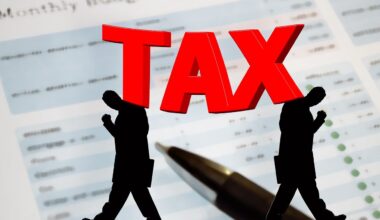Common Copyright Infringements and How to Avoid Them
Copyright infringement occurs when someone uses a creator’s work without permission. This violation includes aspects like unauthorized copying or distributing of text, images, music, or software. Many individuals and businesses do not realize they are infringing copyright laws until legal issues arise. To avoid these complications, it’s crucial to understand what constitutes copyright infringement. Firstly, using someone else’s content without proper attribution can lead to severe repercussions. Secondly, reproducing or altering someone’s work without consent also falls under this category. Thirdly, it is important to consider fair use, which allows limited use of copyrighted materials under specific conditions. This concept often leads to confusion, yet understanding it is essential. Fourthly, always requesting permission before using copyrighted material is advisable. There are numerous resources available to help create original content and keep one’s use within legal boundaries. Finally, consulting with a legal professional specializing in copyright law can save time and money in disputes, ensuring a better understanding of how to navigate these waters effectively and ethically.
Furthermore, it’s important to educate yourself about the various forms of copyright infringement. There are several types, such as primary infringement, where the original work is directly copied, and secondary infringement, which occurs when someone facilitates others in committing infringement. Additionally, public performance or display of copyrighted materials without authorization also qualifies as infringement. Engaging in peer-to-peer sharing of music or software, for instance, is a common pitfall for users unaware of copyright laws. Additionally, creating derivative works without permission can lead to disputes, whether through adaptations or modifications of existing content. Ensuring respect for the original creator’s rights not only prevents legal issues but also supports artistic integrity. Keeping thorough records of licenses obtained and agreements made can protect one’s interests significantly. Furthermore, embracing original creativity helps enhance reputations while avoiding risks associated with copyright violations. Individuals and organizations can foster a culture of respect for intellectual property by being aware of these various infringements. Such awareness not only protects their own works but also creates a healthier environment for innovation and creativity.
Strategies to Prevent Copyright Infringement
One effective strategy to prevent copyright infringement is to create original content diligently. This means producing work from an individualized perspective rather than relying on others’ materials. Countless creators thrive by drawing inspiration from existing works while ensuring their outputs are unique. Moreover, educating employees about copyright issues is critical for organizations. By conducting workshops or training sessions, businesses can heighten awareness and discourage unintentional violations. Another strategy involves utilizing Creative Commons licenses, which allow content creators to share their work legally while retaining certain rights. Such licenses empower others to use the work, provided they adhere to specified terms. Furthermore, regularly reviewing your own published materials is essential to verify compliance with copyright regulations. This includes ensuring all necessary permissions for images or music included in your work have been acquired. Furthermore, collaborating with other creators can benefit all parties involved, forging relationships based on mutual respect for artistic expression. Following through with these strategies can drastically minimize the likelihood of copyright infringements, making it paramount for responsible content production.
Additionally, using copyright notices can greatly benefit creators seeking protection for their works. A copyright notice, which typically includes the © symbol, the year of publication, and the owner’s name, serves as a public marker of ownership. While copyright protection is automatic upon creation in many jurisdictions, this notice reinforces the creator’s claim, reminding others to seek permission before using the work. Moreover, registering works with the United States Copyright Office or equivalent institutions around the world provides an extra layer of legal protection. Such registration not only officially documents the creation date but also establishes the creator’s rights in case of disputes. Furthermore, being proactive about monitoring your work online can help identify unauthorized usage, allowing for swift action when necessary. Tools such as Google Alerts can notify creators when their work is used, providing opportunities for resolving issues before they escalate. Engaging in community forums and discussions about copyright can also provide valuable insights for creators as they share experiences and strategies. Following these best practices can create a robust defense against copyright infringements, safeguarding creators’ interests and livelihoods in the long run.
Understanding Fair Use in Depth
Understanding fair use is critical to navigating copyright effectively. This legal doctrine allows limited use of copyrighted material without seeking permission in specific contexts. For educational, research, criticism, commentary, and news reporting purposes, fair use provides leeway for users to engage with copyrighted works. However, determining whether a use qualifies as fair involves evaluating several factors. These include the purpose and character of the use—whether it’s for commercial or educational purposes—and the amount and substantiality of the original work used. Also, considering the effect of the use on the market value of the original work plays a key role in this assessment. Navigating fair use can be challenging, as many people misunderstand its boundaries. It is advisable to err on the side of caution, seeking legal advice when in doubt about specific usage. Many organizations provide guidelines on fair use to assist individuals in complying with copyright laws effectively. By fostering an understanding of fair use, creators can confidently navigate the complexities of copyright while maximizing the potential of their works without infringing on others’ rights.
Moreover, seeking licenses for copyrighted material, when necessary, is a vital step for users. When the fair use doctrine doesn’t apply, obtaining the appropriate licenses protects users from potential infringement claims. Various platforms and licensing agencies simplify this process, allowing users to find the necessary permissions with ease. For instance, using stock photo websites or music licensing platforms provides access to a wide array of media legally. Furthermore, before using any third-party content, it’s recommended to clarify and review the licensing terms thoroughly. Understanding what specific rights are granted ensures compliance and reduces the risk of any associated conflicts. Additionally, establishing relationships with copyright holders can benefit users by making future collaborations smoother. Always maintaining transparency in how copyrighted work is utilized fosters goodwill among creators in shared industries. Proactively addressing copyright issues can prevent unnecessary misunderstandings or conflicts while nurturing creative communities. Ultimately, this approach fosters an environment where creative individuals can collaborate, share, and inspire one another while following essential legal guidelines.
The Role of Technology in Copyright Compliance
The increasing dependency on technology profoundly affects copyright compliance practices. Digital tools support creators in managing their works, ensuring they adhere to copyright laws effectively. For example, plagiarism detection software helps identify potential infringements in one’s work, allowing users to rectify issues before publication. Additionally, organizations can use digital rights management (DRM) systems to safeguard their intellectual properties and regulate how their works are accessed and shared. Such safeguards ensure that users have granted appropriate permissions while protecting the overall integrity of the work. Moreover, technology has facilitated the monitoring of copyrights, enabling creators to track the usage of their content across various platforms. Social media monitoring tools keep creators informed of any unauthorized sharing or modifications. Furthermore, utilizing content identification systems can help identify and remove infringing material swiftly. This technology minimizes the burden on individuals and organizations and streamlines legal processes, making the entire copyright landscape more navigable. As technology continues to advance, creators and users must remain updated on the tools available, ensuring they navigate copyright law effectively while protecting their rights.
Finally, promoting a culture of copyright respect and ethical usage is essential within any creative community. Encouraging conversations around copyright adherence fosters a sense of responsibility among collaborators while minimizing infringing activities. Schools and educational institutions play a significant role in instilling these values early in students’ creative journeys. Integrating copyright education into curriculums ensures upcoming creators recognize the importance of respecting others’ works. Furthermore, successful creators can serve as role models by openly discussing their experiences with copyright issues, sharing strategies for ethically using others’ materials. By fostering a community focused on responsibility and mutual respect, creators can thrive and innovate while navigating copyright challenges effectively. Encouraging transparency in creative processes ensures all parties acknowledge and uphold rights. Seeking advice from legal professionals and granting open licenses when appropriate can promote a fair atmosphere in industries often plagued by disputes. Ultimately, building a collaborative ecosystem where creativity flourishes, coupled with a strong understanding of copyright norms, creates a lasting positive impact across diverse artistic fields.


